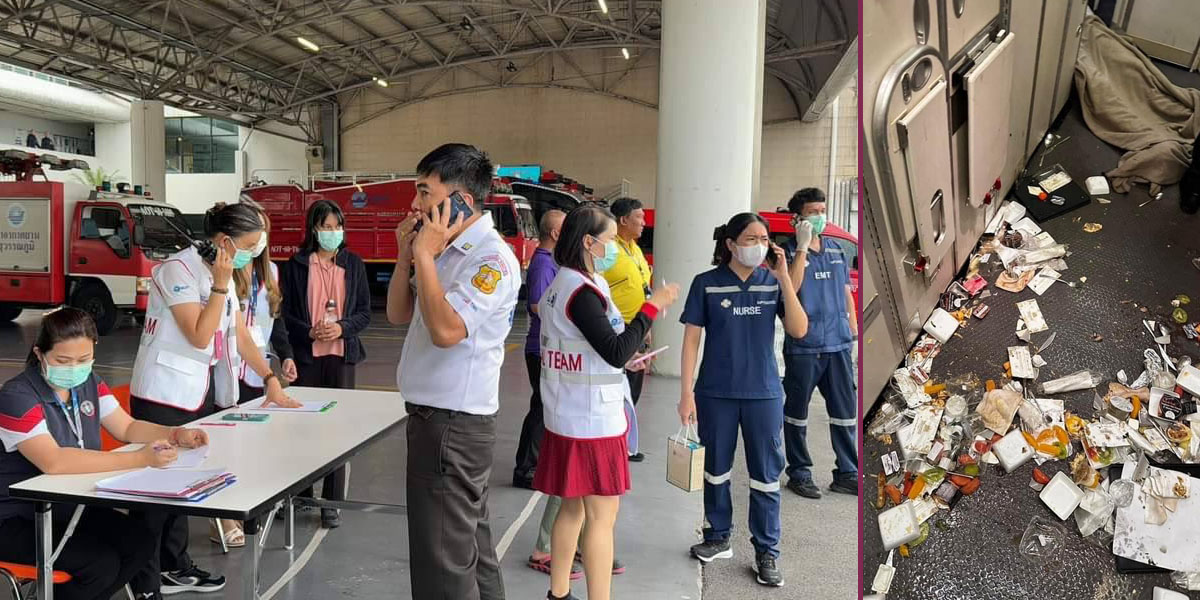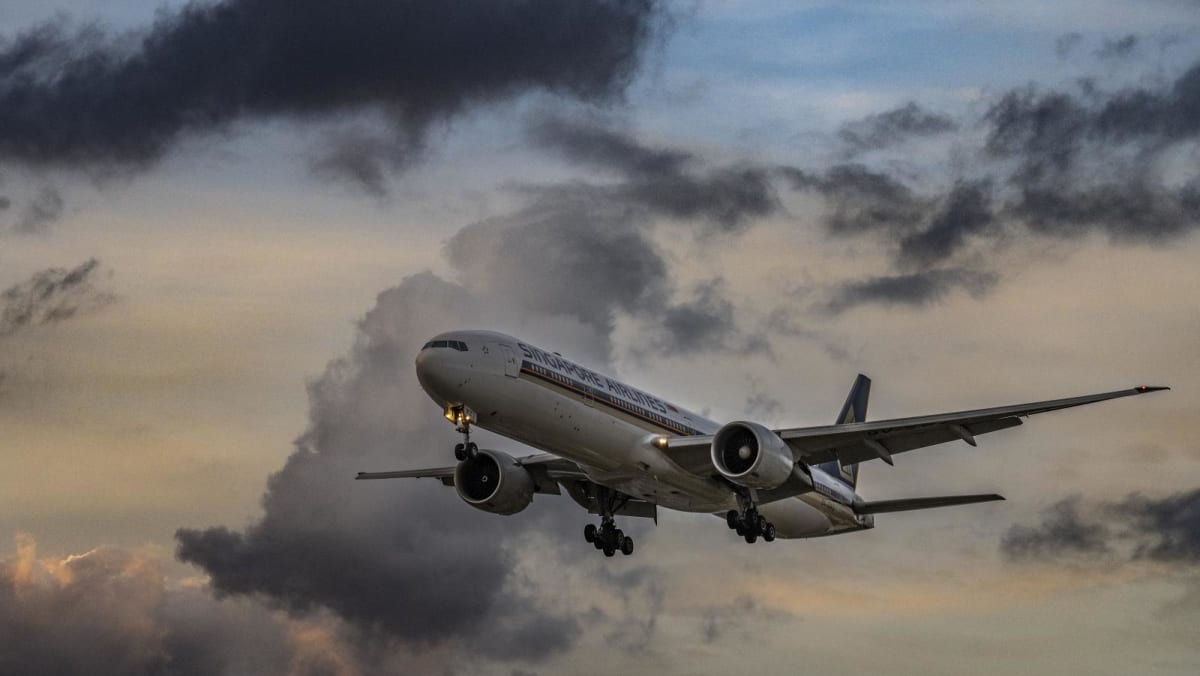Introduction: Turbulence Singapore

Turbulence singapore – Turbulence, a common occurrence in the aviation industry, poses a significant concern for Singapore, a major aviation hub. Understanding its prevalence and impact is crucial for ensuring the safety and efficiency of air travel in the region.
Turbulence in Singapore can be a jarring experience, but it’s nothing compared to the tranquility of Greenville, Iowa . This charming town offers a peaceful escape from the hustle and bustle of city life, with its rolling hills, quaint shops, and friendly locals.
While turbulence in Singapore may be unavoidable, it’s comforting to know that there are places like Greenville where one can find respite from the unexpected jolts of life.
Historically, Singapore has experienced several notable turbulence incidents. In 2016, a Singapore Airlines flight encountered severe turbulence over the South China Sea, resulting in injuries to 12 passengers and crew members. Another incident in 2018 involved a Scoot flight that experienced severe turbulence over the Indian Ocean, causing injuries to 17 passengers.
Turbulence is a common occurrence in Singapore’s airspace, and it can be a harrowing experience for passengers. While turbulence is generally not dangerous, it can cause injuries if passengers are not properly secured. In some cases, turbulence can even lead to plane crashes.
One of the most infamous cases of turbulence-related plane crashes occurred in 1985, when a Japan Airlines Boeing 747 crashed into Mount Takamagahara, killing all 520 passengers and crew on board. The infected blood scandal in the United Kingdom is another example of a tragedy that could have been avoided if proper safety precautions had been taken.
In this case, thousands of people were infected with HIV and hepatitis C through contaminated blood products. The scandal led to a public inquiry and the resignation of several government ministers.
Historical Data
- 2016: Singapore Airlines flight over the South China Sea – 12 injuries
- 2018: Scoot flight over the Indian Ocean – 17 injuries
Causes of Turbulence
Turbulence in the atmosphere is a common phenomenon that can affect aircraft during flight. It is primarily caused by meteorological factors, geographical features, and air traffic patterns. Understanding these causes can help pilots anticipate and mitigate turbulence, ensuring a smoother and safer flight experience.
The recent turbulence in Singapore’s skies has raised concerns among travelers, reminding us of the unpredictable nature of weather patterns. Just as tornadoes can wreak havoc in Iowa ( tornado warning iowa ), turbulence can disrupt flights and cause discomfort for passengers.
While turbulence is a common occurrence, it’s important to remember that it’s typically not a cause for alarm. Most turbulence is mild and short-lived, and pilots are trained to handle it effectively. However, it’s always wise to buckle up and follow the instructions of the flight crew to ensure a safe and comfortable journey.
Meteorological Factors
Meteorological factors play a significant role in the formation of turbulence. Atmospheric instability, caused by differences in temperature and pressure, can create updrafts and downdrafts, leading to turbulence. Additionally, wind shear, which occurs when winds change speed or direction over a short distance, can also cause turbulence. These factors are often associated with weather fronts, thunderstorms, and jet streams.
Turbulence in Singapore is a common occurrence, especially during the monsoon season. However, recent reports of Singapore Airlines flight turbulence have raised concerns among travelers. While turbulence is generally not dangerous, it can be uncomfortable and cause injuries if not handled properly.
It is important for passengers to follow the instructions of the cabin crew and to remain seated with their seatbelts fastened during periods of turbulence.
Geographical Features
Geographical features, such as mountains and valleys, can also influence turbulence formation. As air flows over these obstacles, it can be forced to change direction or speed, creating turbulence. Additionally, the presence of trees, buildings, and other structures can also disrupt airflow and contribute to turbulence, especially during takeoff and landing.
Air Traffic Patterns
Air traffic patterns, particularly in busy airspace, can also contribute to turbulence. The wake turbulence created by large aircraft can persist for several minutes, affecting other aircraft flying behind. Additionally, converging or diverging flight paths can create areas of increased turbulence as aircraft maneuver to maintain separation.
Effects of Turbulence
Turbulence can have significant impacts on aircraft operations, passenger comfort, and safety, as well as economic implications.
Turbulence can cause aircraft to experience sudden changes in altitude, speed, and direction, which can lead to discomfort and even injuries for passengers and crew. Severe turbulence can also damage aircraft structures and systems, potentially leading to accidents.
Effects on Aircraft Operations
Turbulence can disrupt aircraft operations in several ways. It can cause delays and cancellations, as well as increased fuel consumption and maintenance costs. In severe cases, turbulence can make it impossible for aircraft to take off or land, leading to airport closures and widespread disruptions.
Effects on Passenger Comfort and Safety
Turbulence can cause discomfort and anxiety for passengers, especially those who are prone to motion sickness. In severe cases, turbulence can lead to injuries, such as bruises, cuts, and broken bones. Pregnant women, the elderly, and children are particularly vulnerable to the effects of turbulence.
Economic Implications
Turbulence-related delays and cancellations can have significant economic implications. They can lead to lost productivity, missed appointments, and increased travel costs. In the United States alone, turbulence-related delays cost the airline industry billions of dollars each year.
Mitigation Strategies

To mitigate the risks associated with turbulence, a combination of technologies, pilot strategies, and air traffic control measures are employed. These strategies aim to detect, avoid, or minimize the effects of turbulence, ensuring a safer and more comfortable flight experience.
Technological Advancements
Advanced weather detection and forecasting systems play a crucial role in identifying areas of potential turbulence. These systems utilize real-time data from weather satellites, radar, and sensors to generate accurate forecasts and alerts. By providing pilots with timely information about turbulence, they can adjust their flight paths accordingly, avoiding or minimizing exposure to turbulent conditions.
Pilot Strategies
Pilots are trained to recognize and respond to turbulence effectively. They utilize various techniques to minimize the impact of turbulence on the aircraft and passengers. These techniques include:
- Adjusting the aircraft’s speed and altitude to reduce the effects of turbulence.
- Using autopilot or flight control systems to stabilize the aircraft and reduce pilot workload.
- Communicating with other aircraft and air traffic control to obtain real-time updates on turbulence conditions.
Air Traffic Control Management
Air traffic controllers play a vital role in managing turbulence-related risks. They monitor weather conditions and turbulence reports, providing timely advisories to pilots. By coordinating with pilots, air traffic controllers can adjust flight paths and altitudes to minimize exposure to turbulence and ensure safe and efficient airspace operations.
Future Trends
The future of turbulence management holds exciting prospects as emerging technologies and scientific advancements converge. These innovations promise to enhance our understanding of turbulence, improve forecasting capabilities, and develop innovative mitigation strategies.
One significant trend is the integration of artificial intelligence (AI) and machine learning (ML) into turbulence prediction models. These technologies can analyze vast amounts of historical data and identify complex patterns that are difficult for humans to detect. By leveraging AI and ML, meteorologists can develop more accurate and timely turbulence forecasts, providing pilots with critical information to plan their flight paths and avoid turbulent areas.
Climate Change Impact, Turbulence singapore
Climate change is another factor that could significantly impact turbulence patterns. As global temperatures rise, the atmosphere becomes more unstable, leading to increased frequency and intensity of turbulence. Researchers are investigating the potential effects of climate change on turbulence, using climate models to simulate future atmospheric conditions and assess their impact on aircraft operations.
Future of Turbulence Management in Singapore
Singapore, as a leading aviation hub, is actively exploring innovative approaches to turbulence management. The Civil Aviation Authority of Singapore (CAAS) is collaborating with research institutions and industry partners to develop advanced turbulence detection and mitigation technologies. These initiatives include the deployment of real-time turbulence monitoring systems at Singapore’s Changi Airport and the development of predictive models that can anticipate turbulence based on weather patterns and aircraft data.
Turbulence in Singapore has raised concerns about the safety of blood transfusions, echoing the tragic infected blood scandal that plagued the United Kingdom in the 1970s and 1980s. While Singapore’s healthcare system has robust safeguards in place, the recent incident serves as a reminder of the potential risks associated with blood transfusions.